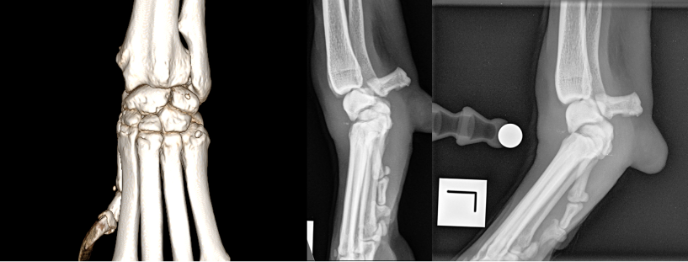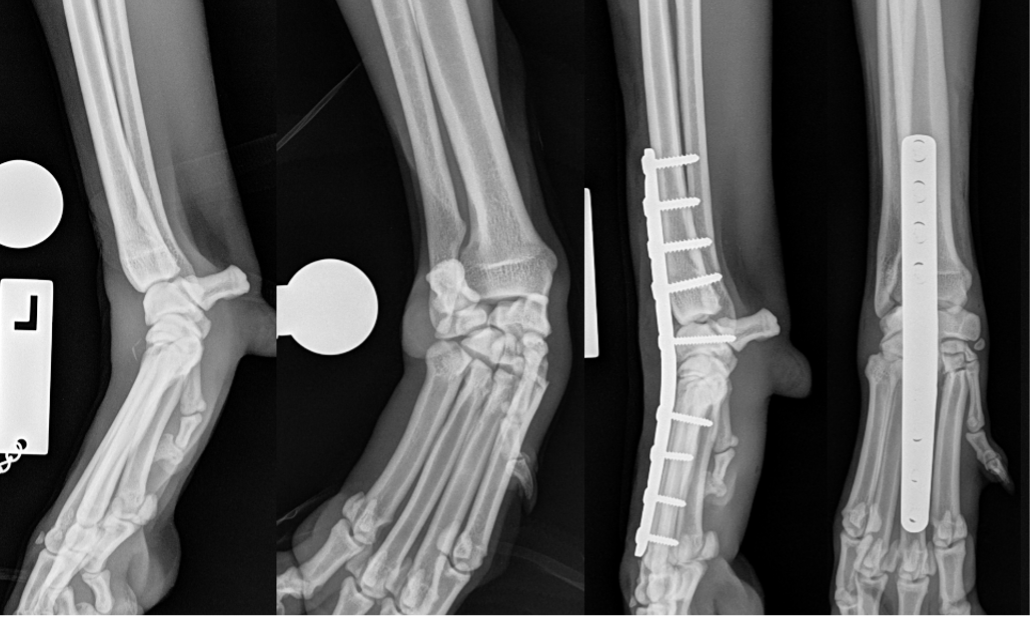Pancarpal arthrodesis, a surgical stabilization of the carpus (wrist) joint, is commonly recommended for dogs suffering from carpal hyperextension injuries. This guide explains the condition, the anatomy of the carpal joint, and the rationale behind the treatment.
The carpus in dogs and cats is analogous to the human wrist, comprising a series of small bones that allow for flexibility and movement in the front leg.
Carpal hyperextension injuries result in damage to the fibrocartilage and ligaments that stabilize the carpal joint, making it unstable and painful. These structures unfortunately cannot heal with enough strength to keep the carpus stable.

Pancarpal arthrodesis involves fusing the carpal bones, effectively eliminating motion in the joint to provide pain relief and stability. The cartilage is removed from the joint surfaces and a bone graft (from the shoulder) is placed in the joint space. The joint is then held in place with plates and screws.
This procedure is the primary treatment of choice for severe carpal hyperextension injuries, with high success rates leading to improved limb function and pain relief. While the idea of fusing the entire joint may seem extreme, this is a very well-tolerated procedure. Many patients do not have an obvious difference in leg use after the surgery.

While the procedure generally results in positive outcomes, potential complications include:
Remember, while there are potential complications, pancarpal arthrodesis has a high success rate and improves many patient's quality of life. Around 10% of patients will have a complication that will require a second surgery. While this can be daunting, in the majority of cases the complication can be successfully resolved.
Your pet’s full return to normal activity may take several months, but with diligence and proper care, they can enjoy a pain-free, active life once again.
If you have questions or concerns, please don't hesitate to reach out to the VetSurg team on 08 9207 5222 or contact@vetsurg.com.au